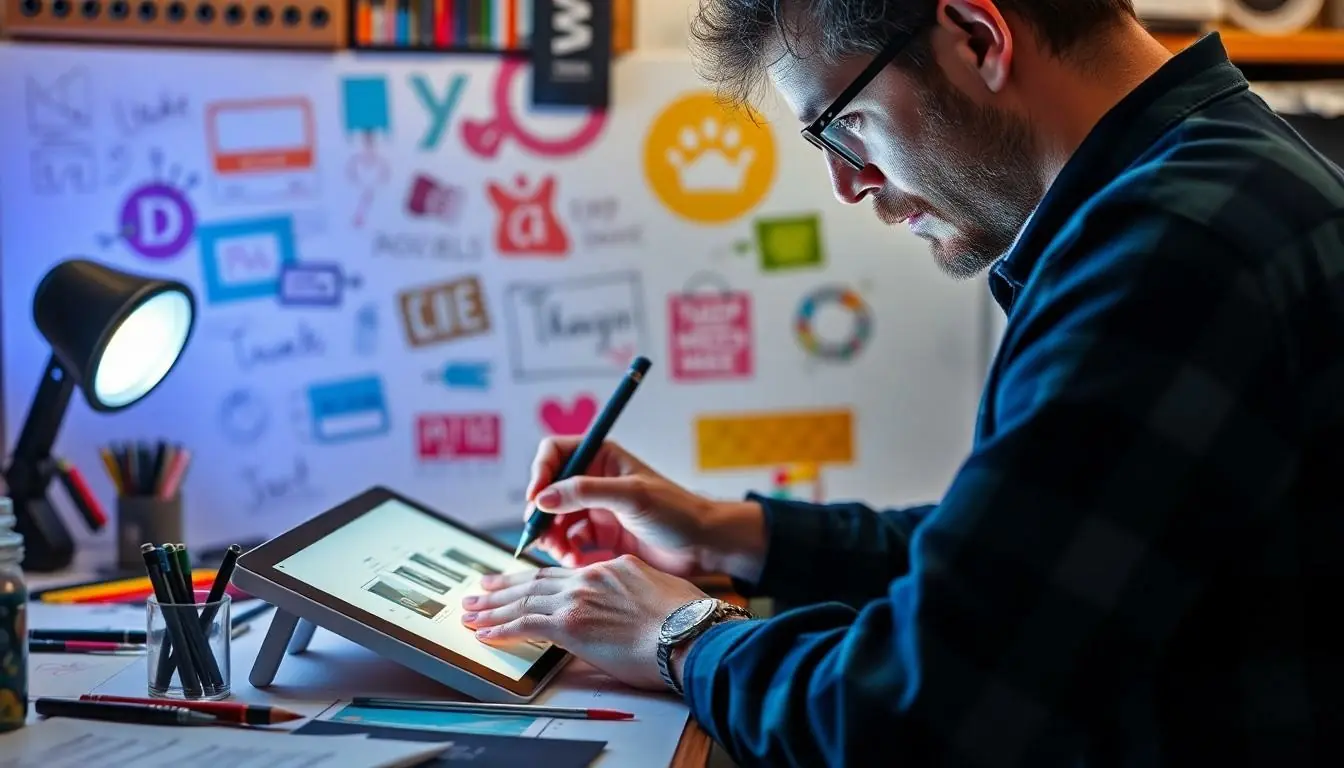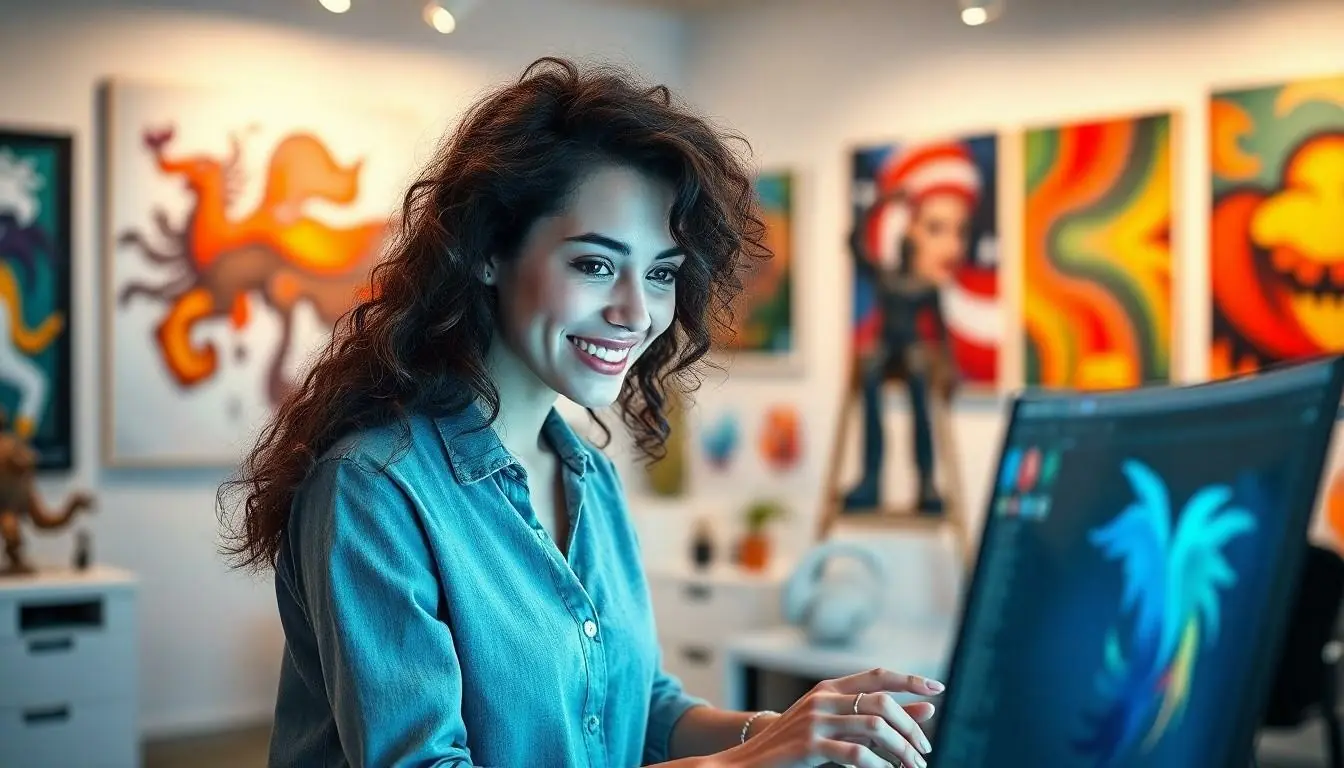In a world where AI can write poetry, compose music, and even beat humans at chess, the question arises: can ChatGPT-4 whip up a masterpiece of visual art? Imagine asking a chatbot to paint a sunset or conjure up a whimsical creature from your wildest dreams. Sounds like something out of a sci-fi movie, right?
Table of Contents
ToggleOverview of ChatGPT 4
ChatGPT 4 represents a significant advancement in artificial intelligence, particularly in understanding and generating human-like text. This version of the model improves on its predecessors with enhanced language comprehension and creativity. Various applications extend beyond traditional text generation, offering potential in fields like storytelling and dialogue simulation.
Creative tasks engage ChatGPT 4 effectively, showcasing its ability to craft poetry, generate narratives, and devise unique gaming scenarios. User interactions highlight its skill in producing compelling dialogues, making it a valuable tool for writers seeking inspiration. ChatGPT 4 demonstrates improved contextual understanding, allowing for more nuanced responses that align with user intentions.
Features of ChatGPT 4 include fine-tuned machine learning models capable of engaging in conversations that reflect complex human thoughts and emotions. Ongoing training on vast datasets equips the model with significant linguistic knowledge. This capability emphasizes the potential of AI to participate in artistic discussions and creative endeavors.
While purely text-based, ChatGPT 4 raises questions about its integration with image-generating technologies. The growing interest in combining text and visual art underlines the importance of exploring AI’s boundaries in creativity. This integration could transform how users perceive and interact with AI in generating multimedia experiences, positioning ChatGPT 4 as a catalyst for deeper creative interactions in the digital age.
Exploring these aspects demonstrates the expanding potential of AI systems like ChatGPT 4, steering conversations toward the fascinating convergence of text and image creation.
Capabilities of ChatGPT 4

ChatGPT-4 exhibits advanced capabilities, especially in text generation and its potential for image creation. These attributes form a unique blend of creativity and technology.
Text Generation
ChatGPT-4 excels at producing human-like text, showcasing a remarkable ability to understand context and generate coherent narratives. Writers find it invaluable as it crafts compelling dialogues, elevating storytelling experiences. Ideas flow seamlessly as the model simulates realistic conversations. Enhanced algorithms analyze user inputs, leading to richer interactions. This capacity allows creators to explore diverse genres and styles without compromising quality.
Image Creation Potential
Although primarily a text-based model, ChatGPT-4 hints at significant image creation potential through integration with existing technologies. Collaboration with image-generating models such as DALL-E accentuates its capabilities. Users envision unique artworks by combining textual prompts with visual inputs. This integration fosters a new frontier in creative expression. Artists and designers benefit as AI assists in brainstorming and concept development. Future advancements could further blur the lines between text and visual art, enriching artistic discussions and experiences.
How Image Generation Works
Image generation involves sophisticated algorithms and data processing techniques. These technologies create visual content based on textual inputs or other guiding parameters.
Technology Behind Image Creation
AI employs deep learning methods to generate images. Neural networks, specifically generative adversarial networks (GANs), play a crucial role in crafting realistic images. Such networks learn from vast datasets containing images and associated descriptions. By understanding patterns, these models generate new images that exhibit similar characteristics to the training data. Furthermore, advancements in transfer learning enhance efficiency by using pre-trained models to accelerate the generation process. This technology enables users to input simple prompts, leading to diverse image outputs that reflect unique styles or concepts.
Comparison with Other AI Models
ChatGPT-4 primarily focuses on text, while models like DALL-E specialize in image generation. DALL-E creates images directly from textual descriptions, showcasing a more direct approach to visual art. Comparatively, ChatGPT-4 relies on integrating with models like DALL-E to produce images indirectly. Each model excels in its domain, yet combining their strengths leads to richer creative possibilities. The collaboration allows users to generate comprehensive artistic expressions by linking textual creativity with visual representation. This synergy shapes a progressive landscape in AI-driven art and design, expanding the capabilities of both text and image generation approaches.
Limitations of ChatGPT 4 in Image Creation
ChatGPT-4 lacks the direct ability to create images. Primarily, it excels in generating text-based content. While it shows potential for integration with image-generating models, such as DALL-E, it doesn’t hold standalone capabilities in visual art creation.
Understanding image generation involves recognizing complex algorithms and deep learning methods. Generative adversarial networks (GANs) play a crucial role in producing visual content. ChatGPT-4 does not utilize these networks for image creation. Instead, it focuses on comprehending and generating language, limiting its functionality in visual domains.
The reliance on collaboration with image-centric models highlights a significant constraint. ChatGPT-4’s text-based nature means it requires external solutions to convert textual prompts into visuals. Integration with models like DALL-E serves as a workaround but doesn’t grant ChatGPT-4 independent image-generating abilities.
Quality in image generation depends on extensive training with diverse datasets. GANs learn from these datasets to craft images that resonate with the characteristics of existing works. ChatGPT-4, lacking access to similar training, cannot replicate this aspect of visual creation.
Users seeking solely image generation will find limitations in ChatGPT-4. Its strengths lie in storytelling, dialogue, and creative writing but not in producing visual art independently. For users desiring artwork, leveraging tools designed explicitly for image creation remains essential. This understanding fosters realistic expectations regarding the capabilities of ChatGPT-4 within the creative spectrum.
Future Prospects
Integration of ChatGPT-4 with image-generating technologies holds promise for future advancements in visual art. Collaboration with models like DALL-E could enable users to translate textual prompts into distinct visuals. Innovations in these technologies may unlock new avenues for creative expression, blending narrative with imagery seamlessly.
Emerging capabilities suggest a shift in how creators approach art and storytelling. By leveraging AI for both text and image generation, artists could craft immersive narratives. The potential synergy between text and visual art provides exciting opportunities for enhancing storytelling experiences.
In upcoming developments, increased training with diverse datasets may elevate the quality of image creation. As AI models evolve, improvements in contextual understanding could lead to more nuanced visual outputs. The expanding relationship between textual AI and visual AI has the capacity to enhance creativity significantly.
Understanding constraints remains important while considering these prospects. ChatGPT-4’s reliance on external models for image generation highlights its text-centric nature. Creators exploring the intersection of text and imagery should remain aware of these limitations. Realistic expectations regarding image quality and generation need to accompany any exploration of these technologies.
As the field progresses, AI may reshape creative workflows and redefine artistic collaborations. Innovations might transform traditional methods, allowing for groundbreaking works that merge written and visual art. Future explorations promise to uncover exciting intersections, driving interest in collaborative artistic endeavors.
ChatGPT-4 showcases impressive capabilities in text generation and creative writing but falls short in direct image creation. Its strength lies in crafting narratives and dialogues rather than producing visual art independently. The potential for collaboration with image-generating models like DALL-E opens exciting possibilities for users seeking to merge text with visuals.
Understanding these limitations is essential for setting realistic expectations. As AI technology continues to evolve, the integration of text and image generation may redefine creative processes. Future advancements could lead to more sophisticated artistic collaborations, enriching the way creativity is expressed in the digital age.

